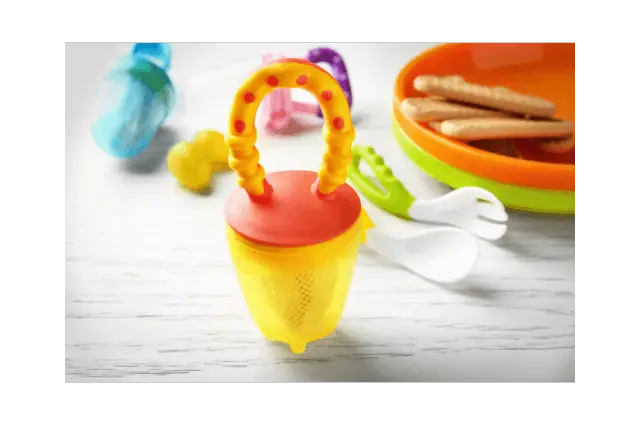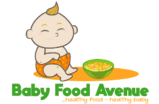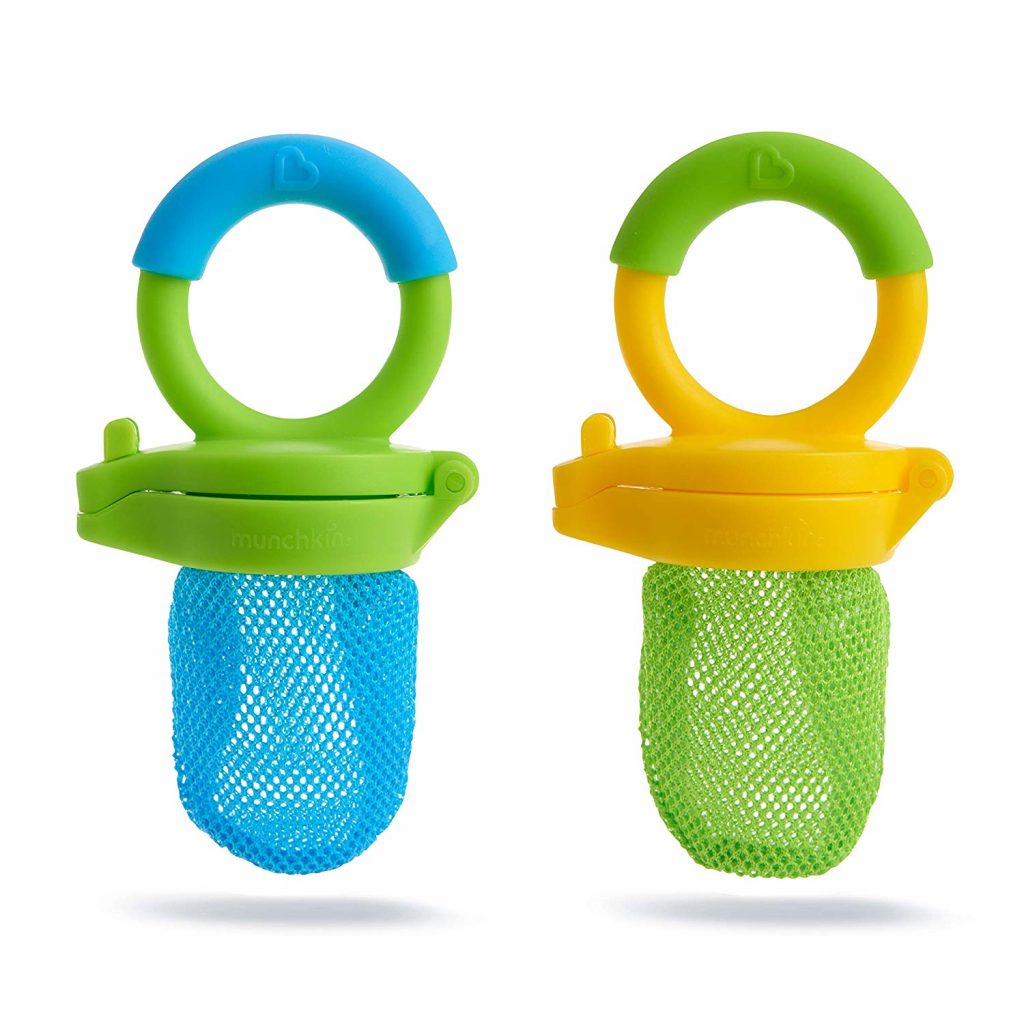This post may contain affiliate links, which means that I may earn a commission if you make a purchase using these links at no extra cost to you.
Don’t know what a baby feeder is? It is a little portable pouch with multiples of holes in attachment to a user-friendly handle for your baby to hold. The way a feeder works is this: the holes in the pouch allow for the passage of some of the flavor and texture of the food that is about to come out.
And you do not need to bother, as your baby will have no business dealing with bigger pieces of food, hence, no issue with choking.
As for mesh feeders, chances are that you have seen one in a local shop and were curious what they worked for. Here is it, they are a fantastic tool for feeding babies and toddlers, and it doesn’t stop here, they are also spectacularly amazing for teething relief.
While the fact remains that there are different mesh feeders on the market today, many parents think it is better to have a prior information as to whether a mesh feeder is a thing for their babies or not. Fortunately, that’s the single reason why we are here.
Pros and Cons of Using Mesh Feeders for Babies

Pros of Using Mesh Feeders for Babies
- It gives your baby a safe chewing practice;
It is easy for parents to think chewing is such a simple thing, and forget it actually demands some levels of coordination, agility, and endurance of the jaw muscles, cheeks muscles, and those of the tongue. Skills like these are not ones your baby is born with, but are rather developed through practice.
A mesh feeder helps your baby take in foods with sizes, textures, and shapes, which she may not be originally able to eat without a feeder.
- It gives your baby an effective transitioning to solids:
While some babies are enthusiastic feeders, others may be unwilling at times, or hesitant. For the latter category of babies, mesh feeder is very much after their interest. You may find that your baby is averse to certain textures, and need to know this is not always a sensory problem.
One fundamental reason your baby may shy away from transitioning to solid foods is a lack of oral motor coordination skills, without which a solid food cannot feel safe.
A mesh feeder helps your baby take in solids safely, and develop vital oral motor skills for a safe and effective feeding.
- It encourages self-feeding :
An easy-to-hold handle and less need for motor coordination are two things that make mesh feeder ideal for baby-feeding. It is not as messy as finger feeding, at least, and so it spares your baby the sensory exercise with some tactile consciousness.
If your baby is resistant to feeding, be sure that a mesh feeder will offer an amazing beginner step for him/her.
- It eases sore teething relief:
Obviously, teething can come with lots of discomfort, and a mesh feeder can very well ease your baby of this issue. If your baby hasn’t started solids yet, you can fill the feeder with ice, formula, or frozen breast milk. If your baby has started on solids, the feeder can be filled with frozen fruit.
- It engages your baby and keeps them active:
Babies can be frantic and restless, and to keep things in order for as long as you want, a mesh feeder comes in quite handy. For instance, maybe there is a particular time of the day when you are just quite busy, your baby is hungry and frantic, and you need to have some minutes to prepare dinner. Here’s what you can do: Put a frozen fruit or ice in the mesh feeder, and boom, your little ones are busy, the same time you also are.
Cons of Using Mesh Feeder
- Your baby may get so familiar with the texture of food through a net that they avoid taking food without it. So, it is not productive to rely on mesh feeders all the time.
- A mesh feeder may not help your baby develop the ability for a pincer grip.
- It doesn’t help your baby develop an independent eating habit
- A mesh feeder can be messy, and therefore, uneasy to clean.
Mesh vs Silicone Feeder
Mesh and Silicone are different types of feeders, and while we have analyzed the information about mesh feeders earlier in this content, this part will be for silicone feeder.
Silicone feeder has the following features:

- It comes with a lid, and is easy to stick in a diaper bag
- Unlike mesh, it is less messy, and therefore easy to clean
- It comes in different sizes that are accommodating of the baby’s growing needs
- Like mesh feeder, it helps to ease teething discomfort
Generally, they are both awesome products, and your baby will like either. Of course, many parents will go for silicone, and that’s because it is easy to clean.
What Kinds of Food Can You Put in Silicone/Mesh Feeder?
- Raspberries, either fresh or frozen
- Strawberries, fresh or frozen
- Blackberries, fresh or frozen
- Cantaloupe
- Honeydew
- Banana
- Mango, fresh or frozen
- Roasted sweet potato
- Roasted butternut squash
- Ripe fresh pepper
- Fresh cucumber
- Water melon
- Cooked red meat
- Frozen grapes
- Uncooked pear
- Peaches/nectarines
- Fresh or frozen raw carrot
- Crushed ice
- Frozen breast milk
Click here to see different kinds of Mesh/silicone feeder to use for your baby –
Can You Put Frozen Formula in Mesh Feeder?
It is honestly not advisable to feed your baby with frozen formula, to start with. Unless, she has a teething issue, and even at that, your pediatrician’s recommendation is what you need for a go-ahead in this regard.
Conclusion
Feeders are great devices for babies as they start out on their feeding journey. In this content, we have analyzed two types of feeders, mesh and silicone. We have discussed the pros and cons of mesh feeder, and contrasted it with silicone feeder. Some of your other possible questions were not left unanswered too. We hope the information helps you.

